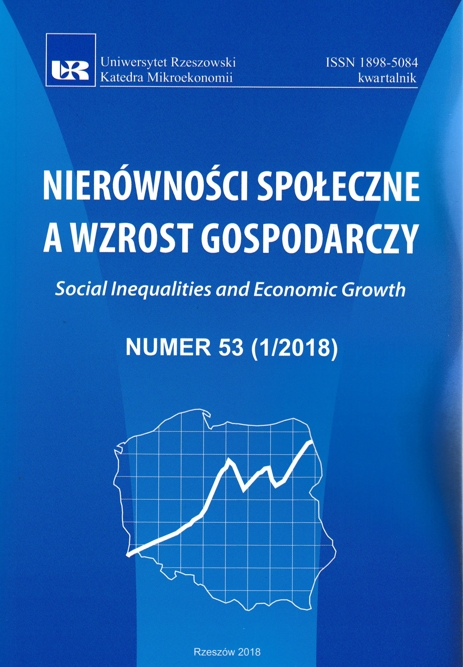Usługi cyfrowe e-administracji w Polsce
DOI:
https://doi.org/10.15584/nsawg.2018.1.26Słowa kluczowe:
społeczeństwo informacyjne, e-administracja, e-wykluczenieAbstrakt
Powszechna cyfryzacja sektora e-usług stanowi współcześnie podstawę rozwoju społecznego i gospodarczego. Rozwój e-administracji stanowi jeden z kluczowych czynników procesu budowy społeczeństwa informacyjnego. W artykule został przedstawiony poziom korzystania z e-usług administracji publicznej w Polsce i krajach UE-28. Analizie podlegały dane empiryczne GUS i Eurostat z lat 2008–2015. Skala korzystania z elektronicznego kanału kontaktów obywatel – urząd jest w Europie mocno zróżnicowana. Termin „społeczeństwo informacyjne” rozumiane jako powszechność korzystania zarówno z Internetu, jak i z e-usług administracji dotyczy takich krajów jak: Dania, Estonia, Norwegia, Finlandia i Holandia, gdzie odsetek osób korzystających z e-usług w 2015 r. wynosił 88% – 75%. Obywatele polscy w rankingach z tego obszaru aktywności wypadają zdecydowanie słabo, znajdując się na ostatnich lokatach.Downloads
Download data is not yet available.
Pobrania
Opublikowane
2020-11-13
Jak cytować
Kasprzyk, B. . (2020). Usługi cyfrowe e-administracji w Polsce. Nierówności Społeczne a Wzrost Gospodarczy, 1(53), 308–319. https://doi.org/10.15584/nsawg.2018.1.26
Numer
Dział
Artykuły
Licencja
Prawa autorskie (c) 2018 Uniwersytet Rzeszowski

Utwór dostępny jest na licencji Creative Commons Uznanie autorstwa – Na tych samych warunkach 4.0 Miedzynarodowe.


